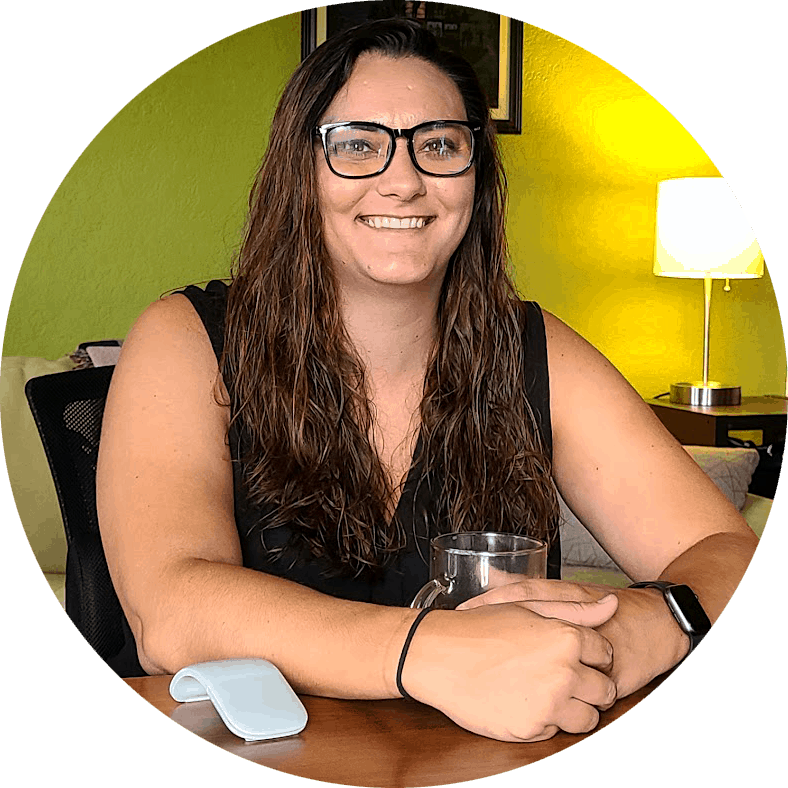Home Health Series: The Payvider Revolution and How They’re Reshaping the Home Health Landscape
UnitedHealth, Humana, and other big players are shifting to the payvider model for home health

THE VBP Blog
August 24, 2023 – A wave of change is sweeping through the home health sector and the VPB blog is here to keep tabs on all of it with our latest and newest Home Health Blog Series. While there are many topics we will cover regarding the home health industry, one of the biggest is the reshaping of the traditional dynamics between payers and providers. As providers are moving away from playing middleman to rolling out their own networks of providers, we get payviders.
While payviders are most common in primary care, they are also creeping into the home health industry. But what’s driving this change and who are the big players getting involved? And, critically, is it beneficial for consumers? You can expect all that and more to be covered in this blog!
What is the Payvider Model?
A payvider is a mutually beneficial business partnership between a healthcare payer and a provider. This model grew out of the recent shift towards value-based care. Through VBP arrangements, providers get paid based on the quality of care they provide, i.e., patient outcomes, instead of the number of services provided that was billed through the fee-for-service (FFS) model. Value-based systems are inherently riskier for providers who are now paid for the quality of their services, but also for payers who pay premium costs. The payvider model is that natural evolution of models that align payer and provider goals and manages the total cost of care of the individuals served.
There are three different kinds of payvider models. They include:
- Joint Venture: A model where payers and providers together design a healthcare plan with shared goals.
- Provider Plans: This is when providers create their own insurance plans, so they control premiums and do not need to share the savings they create with insurance companies.
- Insurance Companies Become Providers: This is where payers (insurance companies) transition to providing healthcare and offering insurance. This is typically done through the acquisition of provider networks and healthcare companies as we will cover in the next section.
The payvider model is nothing new. This is something that has been utilized by health systems for years. What’s changing is that payviders are becoming larger and more geographically diverse as they spread their reach across more of the country. These models have also been an integral part of behavioral health services, with many managed care organizations having behavioral health subsidiaries. And, in the home health arena, more and more providers are acquiring home health companies and incorporating them into their provider networks.
Interestingly, results from a survey conducted by the Healthcare Financial Management Association showed that 60% of health systems in a new survey plan to get into risk-based Medicare Advantage payment models next year, part of a growing trend of providers seeking to become “payviders” and have a greater role in risk management. Taking things a step further, 50% of respondents from that same study noted that strategic partnerships with payers was their top external challenge. This all shows that payers and health plans are becoming increasingly serious in the shift to payvider models, and this is especially true in the home health industry.
United Healthcare and Humana Battling for Home Health Market Share
Among the industry giants venturing into the payvider model, UnitedHealth and Humana are notably at the forefront. UnitedHealth acquisitions and strategic partnerships demonstrate its commitment to integrating care and payment systems and makes it one of the most aggressive of the payviders.
In June 2023, UnitedHealth acquired home health and hospice provider Amedisys for approximately $3.3 billion. While the deal is getting some scrutiny from the DOJ under the Hart-Scott-Rodino Antitrust Improvements Act, the deal is UnitedHealth’s second purchase of this kind. UnitedHealth also recently closed the deal to purchase home health and hospice company LHC for $5.4 billion in early 2023.
These acquisitions are true to UnitedHealth’s goal of capturing revenue from medical care delivered outside of the home and gaining a bigger footprint in the post-acute space. As home-based care gains popularity and the Medicare Advantage population expands, there is increasing incentive to reduce overall cost of care and shift care to the most appropriate, lowest cost setting, which is often the home. Both LHC and Amedisys have complementary services that not only allow UnitedHealth to offer a diverse range of services across the post-acute spectrum, but also have more “on-ramps” to additional services that a patient may need. This is especially important for companies taking financial risk under value-based arrangements, when caring for more complex, higher cost populations.
Bringing these two companies under the same banner, something UnitedHealth hopes the DOJ will allow without broad scale divestitures, would create a home health business unit for UnitedHealth that has unrivaled scale. The only competitor at the magnitude is Humana’s Home Solutions business arm. While difficult to gauge true scale, with Amedisys and LHC under the UnitedHealth banner, it would likely give them a 10% market share and put them ahead of CenterWell Home Health, as the largest home health provider organization in the United States.
Humana has also made strategic investments in home health and hospice companies, signifying its vision to become a dominant player in the payvider arena for home health. In fact, Humana announced this strategic shift in 2019. Vishal Agrawal, their chief strategy and corporate development officer stated they were shifting from “an insurance company with elements of healthcare to a healthcare company with elements of insurance.”
While UnitedHealth has made recent strides into the home health market, Humana has been here for quite some time. In August 2021, they completed their acquisition of Kindred at Home, a company that provides home health, hospice and personal care to over 550,000 patients annually. After purchasing the remaining 60% of the company for $5.7 billion, Humana announced it would fold the company into its Home Solutions Business arm under the payer-agnostic health services branding CenterWell Home Health.
Humana did divest Kindred’s hospice and personal care divisions a year later, in August 2022. The healthcare giant sold a 60% stake to private equity firm Clayton, Dubilier & Rice for about $2.8 billion in part of a strategic move to focus on home health and generate cash to improve their balance sheet.
While those moves occurred over a couple of years ago, Humana is still all-in on the payvider model for home health. In a recent interview with Home Health Care News, Dr. Andrew Agwunobi, the president of Humana’s home solutions business, stated “We’re very proud of CenterWell Home Health, formerly Kindred at Home…It has 352 locations, over 9,000 clinicians and more than 350,000 home health patients that we serve every year.”
Agwunobi also noted that their post-acute management services organization, One Home, is an integral part of the organization that manages the network of providers, along the lines of utilization management, network management, equipment coordination, and more with the goal of reducing total cost of care by preventing hospitalizations and emergency department visits.
While reducing cost of care is important, he also stressed the need for positive patient outcomes and satisfaction, “We maintain a patient satisfaction survey star rating of 4…The other thing I’ll say is, it helps with having a large organization that has a lot of data, to be able to innovate to find ways to deliver clinical capabilities that again, drive value-based care.”
Looking forward, Humana anticipates expansion across all CenterWell’s business segments, with acute senior home care as a big driver. CenterWell’s home health represented 30% of home health episodes in states where Humana has a footprint, and they expect that to grow. Their value-based home health model now covers more than 815,000 Medicare Advantage members under its full value-based model, which includes care coordination, home health, DME and infusion. They expect that number to increase to 1.8 million by the end of 2023.
Other Payvider Pioneers Impacting the Home Health Industry
Another example of a payvider with a different approach is Florida Community Care (FCC). In this model, providers form a Provider Service Network (PSN) and created a new Florida Statewide
Medicaid Managed Care Program (SMMC) health plan that is authorized to provide health care services to Medicaid beneficiaries in Florida. FCC is unique because it’s a local provider led entity that has a commitment to partnerships with community-based organizations, providers, and caregivers, to enhance their ability to deliver value-based managed care services specifically aimed at fostering independence while improving health outcomes. In their Provider Handbook, FCC notes that LTC and MMA providers are selected to participate based on an assessment and determination of the network’s needs, but that to be considered, providers must be enrolled with Florida Medicaid.
Other examples of large organizations getting into the home health business include CVS Health, who also owns Aetna, which recently bought home care company Signify Health for $8 billion. Walgreens Boots Alliance also recently acquired the remaining 45% stake of CareCentrix, another home care company to the tune of $392 million.
As you can see, from the largest players in the market to smaller PSNs, the payvider trend is sweeping through the home health industry. The next question to answer is if this is a good thing for consumers and what it means for quality of care. A deep dive into the answer to that question is coming up next week in our Home Health Blog Series, so stay tuned!
Advocates Perspective
The payvider movement in home health, with its intricate blend of opportunities and challenges, is altering the healthcare tapestry. Industry leaders like UnitedHealth, Humana, and CVS are at the helm of the home health industry shift towards a future where care delivery and payment are intricately intertwined. However, while the payvider model promises streamlined operations, enhanced care, and potential cost savings, it’s vital for stakeholders to navigate it with caution. The impact of networks could also have a significant impact on consumer choice. Patient welfare, self-direction and health outcomes need to remain at the core of their endeavors. In our next blog, we’ll look at the benefits and drawbacks of the payvider model, and whether it’s been a good thing for consumers thus far. As the home health landscape continues to evolve, stakeholders and regulators need to establish rules of engagement with appropriate protections for consumers and the competitive environment for providers.
Onward!
Share This Blog!
Get even more insights on Linkedin & Twitter

About the Author
Fady Sahhar brings over 30 years of senior management experience working with major multinational companies including Sara Lee, Mobil Oil, Tenneco Packaging, Pactiv, Progressive Insurance, Transitions Optical, PPG Industries and Essilor (France).
His corporate responsibilities included new product development, strategic planning, marketing management, and global sales. He has developed a number of global communications networks, launched products in over 45 countries, and managed a number of branded patented products.

About the Co-Author
Mandy Sahhar provides experience in digital marketing, event management, and business development. Her background has allowed her to get in on the ground floor of marketing efforts including website design, content marketing, and trade show planning. Through her modern approach, she focuses on bringing businesses into the new digital age of marketing through unique approaches and focused content creation. With a passion for communications, she can bring a fresh perspective to an ever-changing industry. Mandy has an MBA with a marketing concentration from Canisius College.